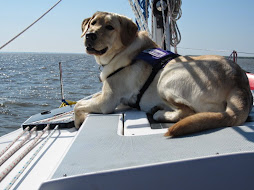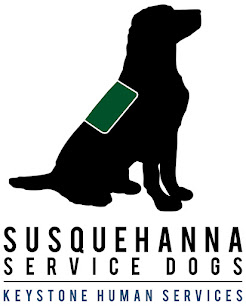The snow from the massive snow storm is starting to melt, but it can still be slippery out there. Floors and stairs inside can also become slick from snow that gets tracked inside on your shoes. While you’re out with your puppy in training during this time of year, one cue can mean the difference between staying on your feet and falling to the ground.
That cue is “leave it.”
SSD Elwood’s puppy raiser, Kelly Slabonik, knows the value
of a good “leave it.” As she and Elwood were walking down the stairs at work,
clicking and treating, one of Elwood’s treats fell out of his mouth and rolled
down the stairs. Kelly immediately said, “Leave it.”
Instead of lunging down the stairs and possibly taking Kelly
down with him, Elwood continued to walk calmly by her side. When they reached
the step with the treat, he waiting while Kelly picked it up.
No one fell down the stairs. No one got hurt.
And Elwood got a jackpot of treats to reinforce his
excellent behavior!
All of our puppies in training start learning “leave it”
soon after they join their puppy raisers. It’s one of the more difficult
behaviors for a dog to learn and needs to be reinforced constantly.
We start training “leave it” by holding a piece of dog food
in a closed hand in front of the puppy. We click and treat when the puppy
ignores the closed hand and makes eye contact with their raiser. Once the puppy
is consistently doing this behavior, we make it harder by holding the food in an
open hand, again clicking and treating when the puppy ignores the food.
We continue to make the behavior harder by putting the food
in different places, such as on the floor, on a coffee table, or on a chair. We
use different types of food and objects. The dogs practice walking past food on
the floor, table, etc., both on and off leash. And then we work on ignoring
food that falls to the ground in front of them.
We also train our dogs not to lunge after treats that fall
out of their mouth. Dropped treats are lost treats. This is especially
important for when the dog is working with their partner. We don’t want the dog
to injure their partner because they were chasing after a treat.
Do you have a “leave it” story about your service dog or dog
in training? Feel free to share it in the comments!










No comments:
Post a Comment